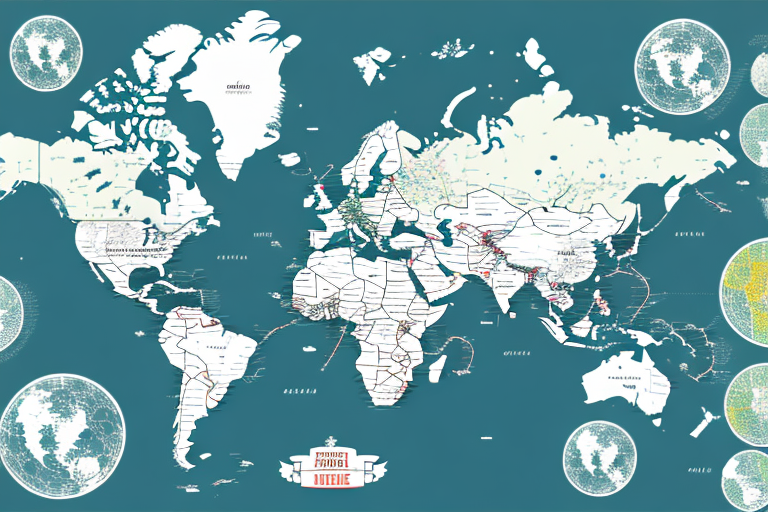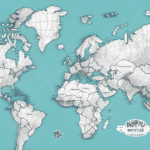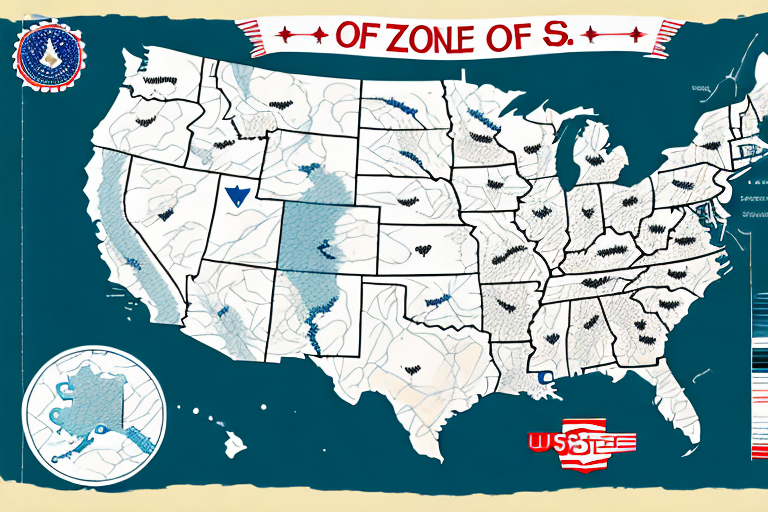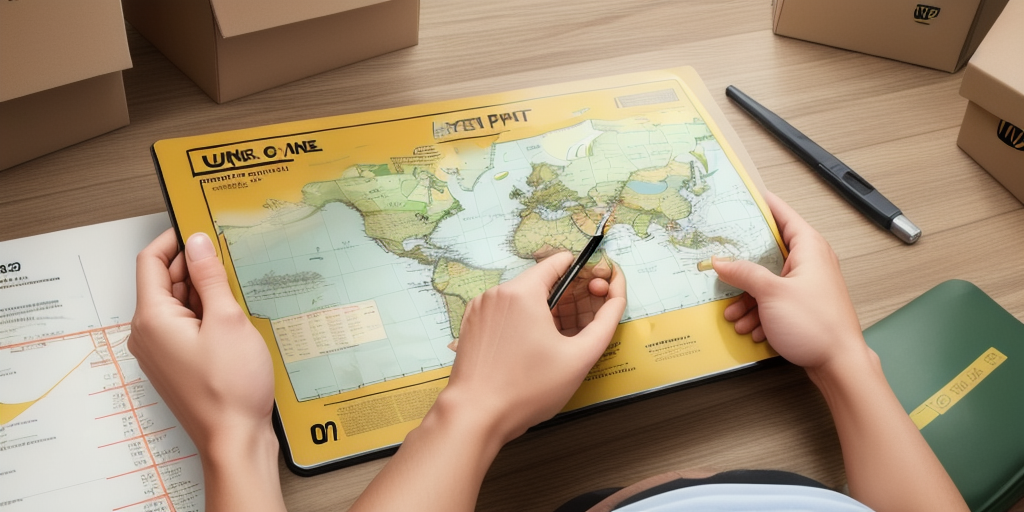If you're a business that frequently ships packages or parcels using United Parcel Service (UPS), then understanding the concept of UPS zones and how to look up your zip code's zone is critical. UPS zones are an essential part of the shipping process that can affect transit times, delivery schedules, and shipping costs. In this article, we'll explain what UPS zones are, how they're calculated, and why they're important for your business. We'll also discuss how to find your zip code's UPS zone, how to use the UPS zone map, and essential tips for saving money on shipping.
What are UPS Zones?
UPS zones refer to the geographical regions or areas defined by UPS for shipping purposes. Each zone represents a specific distance or range of miles between two points and is used to calculate the shipping rate based on the package's weight and destination. UPS zones allow the company to determine the shipping cost and delivery time of the parcel or package more accurately. The zones are numbered from 1 to 8, with zone 1 representing the closest destination and zone 8 the furthest from the shipping origin.
It is important to note that UPS zones are not fixed and can change over time. This is because UPS regularly updates its shipping routes and delivery networks to optimize efficiency and reduce costs. As a result, the distance between two points may change, and the corresponding zone may also change.
Additionally, UPS zones can also affect the delivery time of a package. Packages shipped to destinations within the same zone as the shipping origin typically have a shorter delivery time compared to packages shipped to destinations in a higher zone. This is because packages shipped to higher zones may require more transit time and may need to pass through multiple distribution centers before reaching their final destination.
How are UPS Zones Calculated?
UPS zones are calculated based on the distance between the sender's location and the recipient's location. UPS uses a system called the "Ship From" and "Ship To" zip codes to determine the zone number. A Ship From zip code is the location where the shipping package originates, and Ship To zip code is the destination, and the UPS website uses this information to calculate the distance between the two points. Once UPS determines the distance, it assigns a zone number to the destination.
The zone number is important because it determines the cost of shipping. The farther the distance between the sender and recipient, the higher the zone number and the more expensive the shipping cost. This is because the package will have to travel a greater distance and may require more resources to deliver. It is important to keep this in mind when choosing a shipping option and to consider the distance between the sender and recipient when estimating shipping costs.
Why is it Important to Know Your UPS Zone?
Knowing your UPS zone is vital because it can affect the cost and delivery time of your package. If you ship frequently, understanding your zone number can help you save money on shipping rates and expedite the delivery process. Additionally, knowing your zone number can allow you to plan and optimize your shipping strategy, especially if you are shipping to various locations across the country or across the globe.
Another reason why it is important to know your UPS zone is that it can help you avoid delivery delays and potential issues. By knowing your zone number, you can ensure that your package is being shipped from the correct location and that it is being routed through the most efficient and direct path. This can help prevent your package from being delayed or lost in transit, which can be costly and frustrating for both you and your customers.
How to Find Your Zip Code's UPS Zone
To look up your zip code's UPS zone, visit the UPS website. On the homepage, navigate to the "Shipping" tab and select "Get Rates and Transit Times." On the next page, you will be prompted to enter the origin zip code and destination zip code, along with package weight and dimensions. Once you've entered the information, the website will generate a quote that includes the UPS zone number for your destination.
It's important to note that UPS zones are determined by the distance between the origin and destination zip codes. The farther the distance, the higher the zone number. This information is used to calculate shipping rates and estimated delivery times. It's also worth checking if your package qualifies for any discounts or special rates based on factors such as volume or frequency of shipments. These options can be found on the same page where you enter your zip codes and package information.
Using the UPS Zone Map to Determine Shipping Costs
If you're shipping to multiple destinations, it's essential to have a visual representation of the UPS zones. The UPS website offers a UPS Zone Map that displays the geographical regions and their corresponding zones. You can use this map to determine the shipping costs for different locations, especially if you're planning to ship packages of different weights or sizes. The Zone Map is also an excellent tool for businesses that want to optimize their shipping strategies and save on shipping costs.
Another benefit of using the UPS Zone Map is that it can help you estimate delivery times. The map provides an estimated number of days it will take for your package to reach its destination based on the origin and destination zones. This information can be helpful when planning your shipments and ensuring that your customers receive their packages on time.
It's important to note that the UPS Zone Map is not the only factor that determines shipping costs. Other factors, such as package weight, size, and shipping speed, also play a role in determining the final cost. However, by using the Zone Map as a starting point, you can get a better idea of the shipping costs and delivery times for your packages.
Tips for Saving Money on Shipping with Knowledge of UPS Zones
Knowing your UPS zone can help you save money on shipping. Here are some tips for reducing your shipping costs:
- Choose a lower zone if possible
- Use flat-rate boxes for heavy items
- Optimize your packaging to reduce the weight
- Use UPS's My Choice service to manage your deliveries and hold for pickup
Another way to save money on shipping is to negotiate rates with UPS. If you are a frequent shipper, you may be able to get a discount on your shipping rates. Contact UPS to discuss your options.
It's also important to consider the timing of your shipments. Shipping during off-peak times, such as early in the week or early in the day, can often result in lower rates. Additionally, if you have a flexible delivery schedule, choosing a longer delivery time can also save you money.
Understanding the Differences in Shipping Time between UPS Zones
Another critical factor to consider when shipping using UPS zones is the delivery time. Since each zone represents a specific distance, it also means that the shipping time increases as the distance increases. For example, if you're shipping from the East Coast to the West Coast, the shipping time (in business days) will be longer compared to shipping to the neighboring states or a nearby zip code.
It's also important to note that the shipping time can be affected by other factors such as weather conditions, traffic, and holidays. During peak seasons like Christmas, shipping times may be longer due to the high volume of packages being shipped. It's always a good idea to plan ahead and allow for extra time when shipping during these busy periods.
Additionally, UPS offers various shipping options that can affect the delivery time. For example, if you choose UPS Next Day Air, your package will be delivered the next business day regardless of the distance between the zones. However, this option is more expensive than standard ground shipping. It's essential to consider your budget and the urgency of the shipment when choosing a shipping option.
The Impact of Distance on Transit Times and Delivery Schedules
The distance between the sender and receiver's locations significantly impacts the transit time and delivery schedule. If you're shipping to an area with a higher zone number, it means that the package will take longer to arrive. However, some factors can affect transit times, such as weather conditions and peak seasons, which can prolong the delivery schedule beyond the expected timeframe. That's why it's essential to plan ahead and consider these variables when shipping using UPS zones.
Another factor that can impact transit times and delivery schedules is the type of shipping service selected. For example, UPS Ground is a cost-effective option, but it may take longer to deliver than UPS Next Day Air. Additionally, the size and weight of the package can also affect transit times and delivery schedules. Larger and heavier packages may require more time to process and transport, resulting in a longer delivery schedule.
It's also important to note that international shipping can have a significant impact on transit times and delivery schedules. Customs clearance, import/export regulations, and other factors can cause delays in delivery. It's crucial to research and understand the requirements and regulations of the destination country to ensure a smooth and timely delivery process.
How to Expedite Shipping Across Different UPS Zones
If you need to expedite the shipping process, you can choose UPS's expedited shipping options, such as UPS Express Saver, UPS 2nd Day Air, and UPS Next Day Air. These options can speed up the delivery process, but they typically cost more than standard shipping rates. Another way to expedite shipping is to strategically choose the destination zip code, opting for a lower zone number that is geographically closer to your location.
Common Mistakes to Avoid When Using UPS Zones for Shipping
When shipping with UPS and using the zones to determine the shipping cost, there are some common mistakes to avoid. First, always double-check the Ship From and Ship To zip codes to ensure they are accurate. The wrong zip code can cause a discrepancy in the shipping cost and transit time, affecting the delivery schedule. Additionally, make sure to consider the shipping weight and dimensions to get an accurate quote. Finally, beware of peak seasons and holiday rush, as transit times may be longer than expected.
How to Use Your Knowledge of UPS Zones for Competitive Advantage
Finally, businesses can use their knowledge of UPS zones to gain a competitive advantage. By optimizing their shipping strategies, they can save on shipping costs, expedite the shipping process, and improve customer satisfaction by ensuring timely delivery. Moreover, businesses can use UPS's My Choice service to provide customers with real-time tracking updates, schedule package delivery, and allow for in-store pickup, providing a more convenient shipping experience.
In conclusion, understanding UPS zones and how to look up your zip code's zone is vital for businesses that frequently ship packages using United Parcel Service. Knowing your UPS zone can help you optimize your shipping strategy, reduce shipping costs, and expedite the delivery process. With UPS's online tools, you can easily find your zone number, access the UPS Zone Map, and make educated decisions for your shipping needs.






















